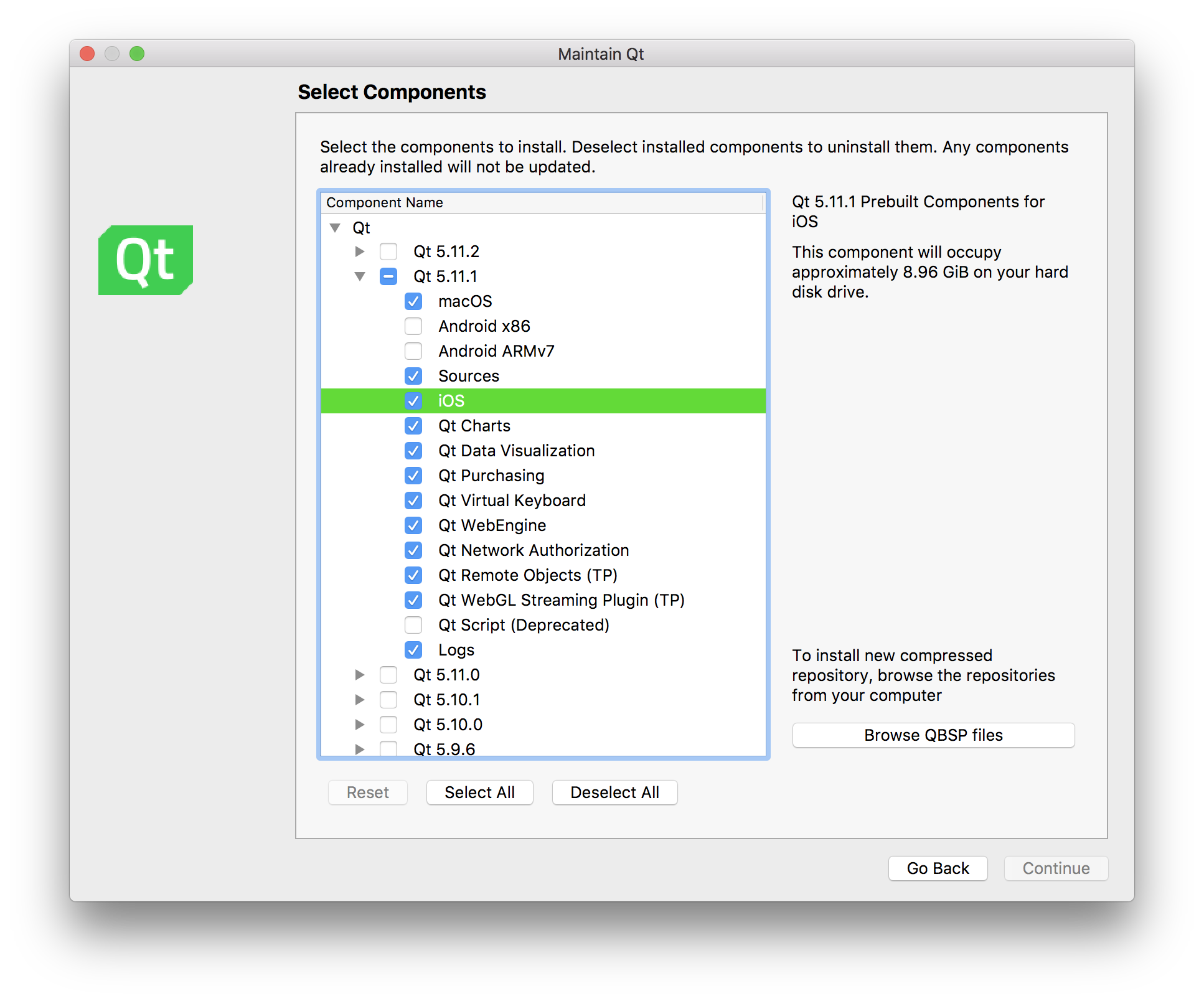That allowed the compilation of the Qt libraries to complete (although some of the Qt example programs failed to compile. But it was enough to get me back on track for now). I suspect this is a Mavericks-specific problem, as the same Qt source tarball (qt-everywhere-enterprise-5.2.0-src.tar.gz) compiled fine with the normal configure. DivX codec - Installing DivX codecs for QuickTime player is a must to make sure users will be able to.
Qt for Mac OS X has some requirements that are given in more detail in the Qt for Mac OS X Requirements document.
The following instructions describe how to install Qt from the source package.
For the binary package, simply double-click on the Qt.mpkg and follow the instructions to install Qt. You can later run the uninstall-qt.py script to uninstall the binary package. The script is located in /Developer/Tools and must be run as root.
Note: Do not run the iPhone simulator while installing Qt. The iPhone simulator conflicts with the package installer.
Step 1: Install the License File (commercial editions only)

If you have the commercial edition of Qt, install your license file as $HOME/.qt-license.
For the open source version you do not need a license file.
Unpack the archive if you have not done so already. For example, if you have the qt-everywhere-opensource-src-%VERSION%.tar.gz package, type the following commands at a command line prompt:
This creates the directory /tmp/qt-everywhere-opensource-src-%VERSION% containing the files from the archive.
Step 2: Build the Qt Library
To configure the Qt library for your machine type, run the ./configure script in the package directory.

By default, Qt is configured for installation in the /usr/local/Trolltech/Qt-%VERSION% directory, but this can be changed by using the -prefix option.
Type ./configure -help to get a list of all available options.
Note that you will need to specify -universal if you want to build universal binaries, and also supply a path to the -sdk option if your development machine has a PowerPC CPU. By default, Qt is built as a framework, but you can built it as a set of dynamic libraries (dylibs) by specifying the -no-framework option.
Qt can also be configured to be built with debugging symbols. This process is described in detail in the Debugging Techniques document.
To create the library and compile all the demos, examples, tools, and tutorials, type:
If -prefix is outside the build directory, you need to install the library, demos, examples, tools, and tutorials in the appropriate place. To do this, type:
This command requires that you have administrator access on your machine.
Note: There is a potential race condition when running make install with multiple jobs. It is best to only run one make job (-j1) for the install.

If you later need to reconfigure and rebuild Qt from the same location, ensure that all traces of the previous configuration are removed by entering the build directory and typing make confclean before running configure again.

Step 3: Set the Environment variables
In order to use Qt, some environment variables need to be extended.
This is done like this:
In .profile (if your shell is bash), add the following lines:
In .login (in case your shell is csh or tcsh), add the following line:
If you use a different shell, please modify your environment variables accordingly.
That's all. Qt is now installed.
Qt Demos and Examples
Installing Qt For Mac Catalina
If you are new to Qt, we suggest that you take a look at the demos and examples to see Qt in action. Run the Qt Examples and Demos either by typing qtdemo on the command line or through the desktop's Start menu.
You might also want to try the following links:
We hope you will enjoy using Qt. Good luck!
Compile Qt For Mac
© 2016 The Qt Company Ltd. Documentation contributions included herein are the copyrights of their respective owners. The documentation provided herein is licensed under the terms of the GNU Free Documentation License version 1.3 as published by the Free Software Foundation. Qt and respective logos are trademarks of The Qt Company Ltd. in Finland and/or other countries worldwide. All other trademarks are property of their respective owners.
